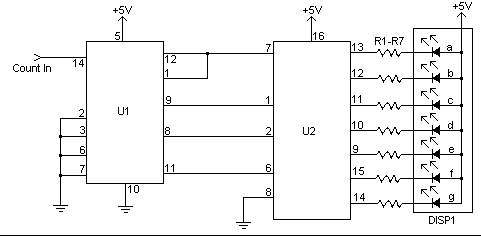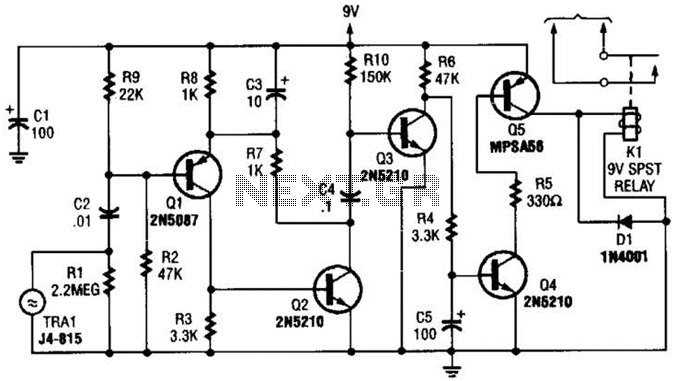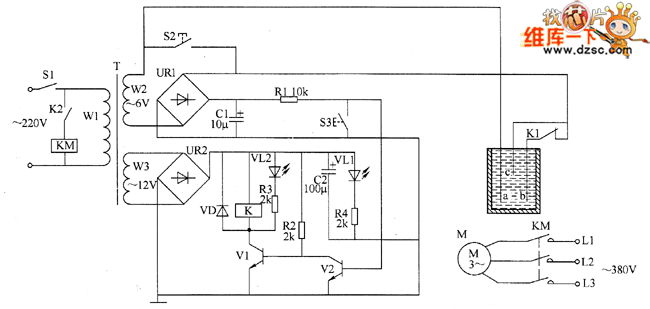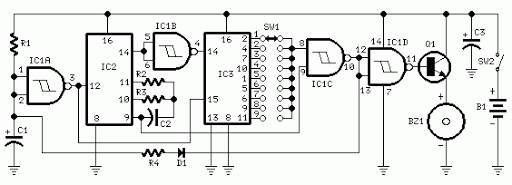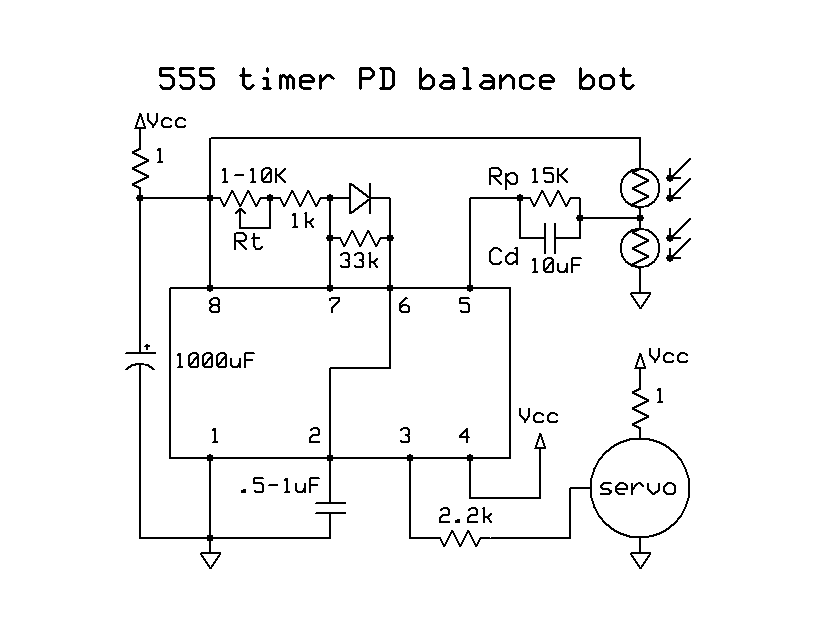
220V LED Flasher circuit diagram
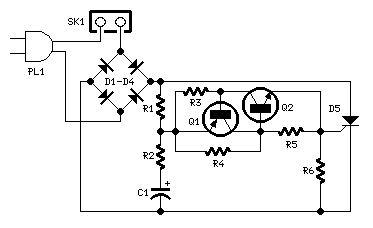
This is a 220V LED flasher circuit designed as a reliable alternative to thermally activated switches used for flashing Christmas tree lamps. It is a cost-effective and easy-to-assemble circuit. The components include R1 (100K), R2 (1K), R5 (1K), R3 (470R), R6 (470R), R4 (12K), C1 (1000μF 25V), D1-D4 (1N4007), D5 (SCR P0102D), Q1 (BC327), Q2 (BC337), and SK1 (Female Mains socket). The device formed by Q1, Q2, and the associated resistors triggers the SCR. The flashing frequency is determined by R1, R2, and C1. To modify the flashing frequency, adjust the value of C1 from 100μF to 2200μF without altering R1 and R2. Optimal performance is achieved with C1 values of 470μF or 1000μF and R4 values of 12K or 10K. Due to the low power consumption of typical 10 or 20 lamp series loops, small and inexpensive SCR devices such as C106D1 or TICP106D can be utilized.
The 220V LED flasher circuit operates by controlling the on-off flashing of LED lamps, making it suitable for decorative lighting applications, particularly during festive seasons. The circuit architecture consists of a combination of resistors, capacitors, diodes, and transistors that work in unison to create the desired flashing effect.
The resistors R1, R2, and R4 form a voltage divider and timing circuit with the capacitor C1, which determines the charging and discharging time, thus controlling the frequency of the flashing. The SCR (D5) is triggered by the transistors Q1 and Q2, which are configured in a manner that allows them to switch the SCR on and off based on the timing circuit's output. The choice of transistors, BC327 and BC337, provides sufficient current amplification to effectively drive the SCR.
For optimal performance, the values of C1 and R4 can be selected based on the desired flashing rate. Higher capacitance values lead to slower flashing rates, while lower capacitance values increase the flashing frequency. The circuit's design ensures that it can handle the low current requirements of LED lamps, which allows for the integration of smaller SCRs, thereby enhancing the circuit's overall efficiency and cost-effectiveness.
The inclusion of a female mains socket (SK1) allows for easy connection to the AC power supply, while the diodes (D1-D4) serve as rectifiers to protect the circuit from voltage spikes and reverse polarity, ensuring reliable operation. This LED flasher circuit exemplifies a simple yet effective solution for creating dynamic lighting effects in various applications.This is a 220V LED flasher circuit which is intended as a reliable replacement to thermally-activated switches used for Christmas tree lamp-flashing. This a cheap circuit and easy to build. R1_ 100K R2, R5_ 1K R3, R6_ 470R R4_ 12K C1_ 1000 F 25V D1-D4_ 1N4007 D5_ SCR P0102D Q1_ BC327 Q2_ BC337 SK1_ Female Mains socket The device formed by Q1, Q2 an
d related resistors triggers the SCR. The flashing frequency is provided by R1, R2 and C1. To change flashing frequency value, just set C1 value from 100 to 2200 F, don`t modify R1 and R2. Best performances are obtained with C1=470 or 1000 F and R4=12K or 10K. Due to low consumption of normal 10 or 20 lamp series-loops, very small and cheap SCR devices can be used, e. g. C106D1 or TICP106D. 🔗 External reference
The 220V LED flasher circuit operates by controlling the on-off flashing of LED lamps, making it suitable for decorative lighting applications, particularly during festive seasons. The circuit architecture consists of a combination of resistors, capacitors, diodes, and transistors that work in unison to create the desired flashing effect.
The resistors R1, R2, and R4 form a voltage divider and timing circuit with the capacitor C1, which determines the charging and discharging time, thus controlling the frequency of the flashing. The SCR (D5) is triggered by the transistors Q1 and Q2, which are configured in a manner that allows them to switch the SCR on and off based on the timing circuit's output. The choice of transistors, BC327 and BC337, provides sufficient current amplification to effectively drive the SCR.
For optimal performance, the values of C1 and R4 can be selected based on the desired flashing rate. Higher capacitance values lead to slower flashing rates, while lower capacitance values increase the flashing frequency. The circuit's design ensures that it can handle the low current requirements of LED lamps, which allows for the integration of smaller SCRs, thereby enhancing the circuit's overall efficiency and cost-effectiveness.
The inclusion of a female mains socket (SK1) allows for easy connection to the AC power supply, while the diodes (D1-D4) serve as rectifiers to protect the circuit from voltage spikes and reverse polarity, ensuring reliable operation. This LED flasher circuit exemplifies a simple yet effective solution for creating dynamic lighting effects in various applications.This is a 220V LED flasher circuit which is intended as a reliable replacement to thermally-activated switches used for Christmas tree lamp-flashing. This a cheap circuit and easy to build. R1_ 100K R2, R5_ 1K R3, R6_ 470R R4_ 12K C1_ 1000 F 25V D1-D4_ 1N4007 D5_ SCR P0102D Q1_ BC327 Q2_ BC337 SK1_ Female Mains socket The device formed by Q1, Q2 an
d related resistors triggers the SCR. The flashing frequency is provided by R1, R2 and C1. To change flashing frequency value, just set C1 value from 100 to 2200 F, don`t modify R1 and R2. Best performances are obtained with C1=470 or 1000 F and R4=12K or 10K. Due to low consumption of normal 10 or 20 lamp series-loops, very small and cheap SCR devices can be used, e. g. C106D1 or TICP106D. 🔗 External reference
Warning: include(partials/cookie-banner.php): Failed to open stream: Permission denied in /var/www/html/nextgr/view-circuit.php on line 713
Warning: include(): Failed opening 'partials/cookie-banner.php' for inclusion (include_path='.:/usr/share/php') in /var/www/html/nextgr/view-circuit.php on line 713
